The Seismic Record
Established in 2021
Editor-in-Chief: Keith Koper
ISSN: 2694-4006
Main editorial office: tsr@seismosoc.org
Keith Koper, Editor-in-Chief
tsreditor@seismosoc.org
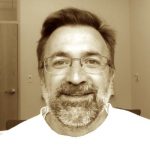
Koper has served as associate professor and professor in the department of geology and geophysics at the University of Utah (United States), and director of the University of Utah Seismograph Stations (UUSS), since 2010. He has been a member of the U.S. Air Force Seismic Review Panel since 2011 and is now chair of the Utah Seismic Safety Commission since serving on the Commission since 2010. He was an associate editor for the Bulletin of the Seismological Society of America from 2003 to 2010 and co-chair of the organizing committee for the 2013 SSA Annual Meeting. Koper worked in 2017 on the SSA subcommittee to update a joint statement by SSA and the American Geophysical Union on the Comprehensive Nuclear Test Ban Treaty, and has served as member and chair of SSA’s Charles F. Richter Early Career Award subcommittee from 2018 to the present.
His research interests and publications focus on array seismology, Earth’s ambient seismic noise field, forensic seismology and exotic sources, rupture imaging of giant earthquakes, seismicity and tectonics of the intermountain West, mining induced earthquakes, and the structure and dynamics of Earth’s deep interior, especially the core.
Vera Schulte-Pelkum, Deputy Editor-in-Chief
tsrdeputyeditor@seismosoc.org
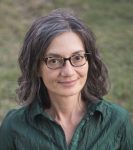
Schulte-Pelkum is an associate research professor in the department of geological sciences at the University of Colorado, Boulder (United States) and a research scientist at the Cooperative Institute for Research in Environmental Sciences (CIRES). Her research interests include structure, deformation, rheology and anisotropy of the lithosphere and mantle; receiver functions and array processing; the seismic noise wavefield; and seismic and volcanic hazards. She received her Ph.D. in geosciences from Scripps Institution of Oceanography, University of California, San Diego in 2001.
In her role as TSR Deputy Editor-in-Chief, Schulte-Pelkum works with the Editor-in-Chief on all aspects of the journal editorial process and serves as member of the journal’s leadership team.
Jeroen Ritsema, Editor-at-Large
tsr_eal@seismosoc.org
Ritsema is a University of Michigan (United States) professor of geophysics and seismology. His research involves the imaging of Earth’s mantle through global scale seismic tomography and the modeling of broadband seismograms. He received his Ph.D. in geophysics from the University of California, Santa Cruz in 1995.
As TSR Editor-at-Large, he works closely with the Editor-in-Chief to recruit relevant, high-impact research for submission to the journal, serving in an ambassador role representing the journal globally within the seismology and earthquake science community.
Tom Green, Managing Editor
(984) 326-3001
tsr@seismosoc.org
Paige Horvath, Production Coordinator
bssaprod@seismosoc.org
Associate Editors
Jonathan Ajo-Franklin
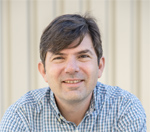 Ajo-Franklin is a professor at Rice University (Texas, United States) in the department of earth, environmental and planetary science as well as a faculty scientist at Lawrence Berkeley National Laboratory (LBNL). He received his B.A. in computer science and history from Rice University in 1998 followed by a Ph.D. in geophysics from Stanford University in 2005. His research interests include active and passive seismic monitoring of subsurface processes such as geothermal energy production, geologic carbon storage, and near-surface hydrogeologic cycles. He also studies new seismic acquisition techniques including distributed acoustic sensing and permanent active sources.
Ajo-Franklin is a professor at Rice University (Texas, United States) in the department of earth, environmental and planetary science as well as a faculty scientist at Lawrence Berkeley National Laboratory (LBNL). He received his B.A. in computer science and history from Rice University in 1998 followed by a Ph.D. in geophysics from Stanford University in 2005. His research interests include active and passive seismic monitoring of subsurface processes such as geothermal energy production, geologic carbon storage, and near-surface hydrogeologic cycles. He also studies new seismic acquisition techniques including distributed acoustic sensing and permanent active sources.
Keywords: applied geophysics, near-surface seismic imaging, distributed acoustic sensing, geothermal monitoring, seismic ambient noise
Pascal Audet
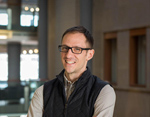 Audet is a seismologist at the University of Ottawa, Canada. He received a Ph.D. in geophysics from the University of British Columbia in 2008. He then worked as a Miller Research Fellow at the University of California at Berkeley from 2008 to 2011, after which he joined the University of Ottawa as an assistant professor (2011-2016) and has been an associate professor since 2016. His research interests include subduction zone structure, seismic imaging, data science, broadband ocean-bottom seismology and open-source software development.
Audet is a seismologist at the University of Ottawa, Canada. He received a Ph.D. in geophysics from the University of British Columbia in 2008. He then worked as a Miller Research Fellow at the University of California at Berkeley from 2008 to 2011, after which he joined the University of Ottawa as an assistant professor (2011-2016) and has been an associate professor since 2016. His research interests include subduction zone structure, seismic imaging, data science, broadband ocean-bottom seismology and open-source software development.
Keywords: subduction zone structure, seismic imaging, data science, broadband ocean-bottom seismology and open-source software development
Brendan Crowell
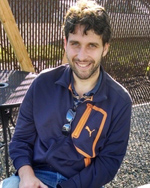 Crowell is a research scientist with the Pacific Northwest Seismic Network at the University of Washington (United States). He received his Ph.D. from Scripps Institution of Oceanography and his B.S. and M.S. from Georgia Institute of Technology. His research interests are in high-rate GNSS, seismogeodesy, tectonic geodesy, and early warning systems.
Crowell is a research scientist with the Pacific Northwest Seismic Network at the University of Washington (United States). He received his Ph.D. from Scripps Institution of Oceanography and his B.S. and M.S. from Georgia Institute of Technology. His research interests are in high-rate GNSS, seismogeodesy, tectonic geodesy, and early warning systems.
Keywords: high-rate GNSS, seismogeodesy, tectonic geodesy, and early warning systems
Steven J. Gibbons
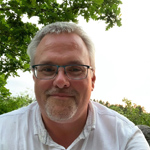 Gibbons is an applied geophysicist at the Norwegian Geotechnical Institute in Oslo, Norway. He received a Ph.D. from the School of Earth Sciences and School of Computer Studies at Leeds University in 1998 on computational fluid dynamics and processes in the deep earth. He worked for 17 years in verification seismology, focusing on seismic signal detection and interpretation for nuclear explosion monitoring. He now works in natural hazards at NGI applying high performance computing to geohazards, including earthquakes, tsunamis, and landslides. His research interests include signal processing and array processing, natural and anthropogenic seismicity, acoustics and infrasound, inverse theory, natural hazards and risk assessment, pattern recognition and machine learning.
Gibbons is an applied geophysicist at the Norwegian Geotechnical Institute in Oslo, Norway. He received a Ph.D. from the School of Earth Sciences and School of Computer Studies at Leeds University in 1998 on computational fluid dynamics and processes in the deep earth. He worked for 17 years in verification seismology, focusing on seismic signal detection and interpretation for nuclear explosion monitoring. He now works in natural hazards at NGI applying high performance computing to geohazards, including earthquakes, tsunamis, and landslides. His research interests include signal processing and array processing, natural and anthropogenic seismicity, acoustics and infrasound, inverse theory, natural hazards and risk assessment, pattern recognition and machine learning.
Keywords: tsunami, verification seismology (or nuclear explosion monitoring), signal processing, seismoacoustics, inverse theory
Ruth Harris
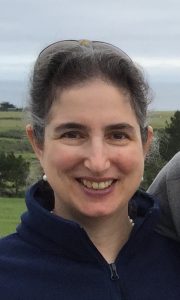 Harris is a Senior Scientist research geophysicist at the U.S. Geological Survey (United States). She received her Ph.D. from the University of California, Santa Barbara, her M.S. degree from Cornell University, and her S.B. from the Massachusetts Institute of Technology. Harris is a member of the USGS Earthquake Science Center and serves as the leader of the 20-scientist Earthquake Processes, Probabilities, and Occurrence project. She uses observations and simulations to help us understand how Earth’s heterogeneous features affect large earthquake behavior and she leads a SCEC-USGS project testing earthquake simulation codes. Harris is a Fellow of the American Geophysical Union. She served as a JGR associate editor from 1997-2001, and as a GRL editor from 2009-2012. She is a longtime member of the Southern California Earthquake Center’s Board of Directors (USGS liaison), and she served on the Seismological Society of America’s Board of Directors for 11 years, including as SSA President from 2015-2016.
Harris is a Senior Scientist research geophysicist at the U.S. Geological Survey (United States). She received her Ph.D. from the University of California, Santa Barbara, her M.S. degree from Cornell University, and her S.B. from the Massachusetts Institute of Technology. Harris is a member of the USGS Earthquake Science Center and serves as the leader of the 20-scientist Earthquake Processes, Probabilities, and Occurrence project. She uses observations and simulations to help us understand how Earth’s heterogeneous features affect large earthquake behavior and she leads a SCEC-USGS project testing earthquake simulation codes. Harris is a Fellow of the American Geophysical Union. She served as a JGR associate editor from 1997-2001, and as a GRL editor from 2009-2012. She is a longtime member of the Southern California Earthquake Center’s Board of Directors (USGS liaison), and she served on the Seismological Society of America’s Board of Directors for 11 years, including as SSA President from 2015-2016.
Keywords: earthquake physics, dynamic rupture, stress triggering, aseismic slip, creeping faults, crustal structure
Jessica Irving
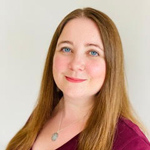 Irving is a senior lecturer in geophysics in the School of Earth Sciences at the University of Bristol (United Kingdom). She received her Ph.D. from the University of Cambridge in 2009 and was on the faculty at Princeton University for seven years. She has primarily worked on the structure of Earth’s deep interior, from the inner core to subduction zones. Jessica is also interested in planetary seismology and she is a participating scientist on NASA’s InSight mission to Mars. Her research involves both high frequency body-wave seismology and normal mode seismology.
Irving is a senior lecturer in geophysics in the School of Earth Sciences at the University of Bristol (United Kingdom). She received her Ph.D. from the University of Cambridge in 2009 and was on the faculty at Princeton University for seven years. She has primarily worked on the structure of Earth’s deep interior, from the inner core to subduction zones. Jessica is also interested in planetary seismology and she is a participating scientist on NASA’s InSight mission to Mars. Her research involves both high frequency body-wave seismology and normal mode seismology.
Keywords: global seismology, planetary seismology, Earth’s core, Earth’s mantle, normal mode seismology
Hiroe Miyake
Keywords: strong motion, rupture process, source modeling, seismic hazard
Zachary Ross
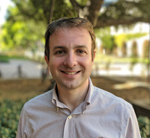 Ross is an assistant professor of geophysics at the California Institute of Technology (United States). He received a Ph.D. in geophysics from the University of Southern California in 2016. His research interests are concentrated in earthquake seismology and emphasize the use of machine learning and statistics to better understand earthquakes and faults. His work has focused on high-resolution imaging of fault zones, analyzing the dynamics of seismicity, and the relationship between fault structure and the earthquake source process.
Ross is an assistant professor of geophysics at the California Institute of Technology (United States). He received a Ph.D. in geophysics from the University of Southern California in 2016. His research interests are concentrated in earthquake seismology and emphasize the use of machine learning and statistics to better understand earthquakes and faults. His work has focused on high-resolution imaging of fault zones, analyzing the dynamics of seismicity, and the relationship between fault structure and the earthquake source process.
Keywords: seismicity, fault architecture, machine learning, source properties
Rigo Tibi
Tibi is 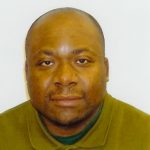 a Principal Member of the Technical Staff at Sandia National Laboratories (United States). He received his Ph.D. in geophysics from Free University Berlin in 2000, and his master’s degree in applied geophysics from University of Mining and Technology Freiberg, Germany, in 1995. His research interests include seismic event discrimination, waveform denoising, machine learning, earthquake source processes, deep-focus earthquakes, earthquake statistics, and explosion monitoring.
a Principal Member of the Technical Staff at Sandia National Laboratories (United States). He received his Ph.D. in geophysics from Free University Berlin in 2000, and his master’s degree in applied geophysics from University of Mining and Technology Freiberg, Germany, in 1995. His research interests include seismic event discrimination, waveform denoising, machine learning, earthquake source processes, deep-focus earthquakes, earthquake statistics, and explosion monitoring.
Keywords: seismic event discrimination, waveform denoising, machine learning, earthquake source processes, deep-focus earthquakes, earthquake statistics, explosion monitoring
Lingling Ye
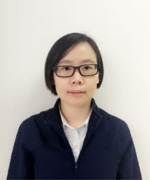 Ye is an associate professor at Southern University of Science and Technology in China. She received her Ph.D. from University of California Santa Cruz in 2015, her master’s degree from Institute of Geology and Geophysics, Chinese Academy of Sciences in 2011, and her B.S. degree from the University of Science and University of Science and Technology of China in 2008. Her research interests include earthquake physics, seismotectonics and Earth’s deep structure.
Ye is an associate professor at Southern University of Science and Technology in China. She received her Ph.D. from University of California Santa Cruz in 2015, her master’s degree from Institute of Geology and Geophysics, Chinese Academy of Sciences in 2011, and her B.S. degree from the University of Science and University of Science and Technology of China in 2008. Her research interests include earthquake physics, seismotectonics and Earth’s deep structure.
TSR is owned and published by the Seismological Society of America.
TSR is indexed by the Directory of Open Access Journals and by Scopus.
